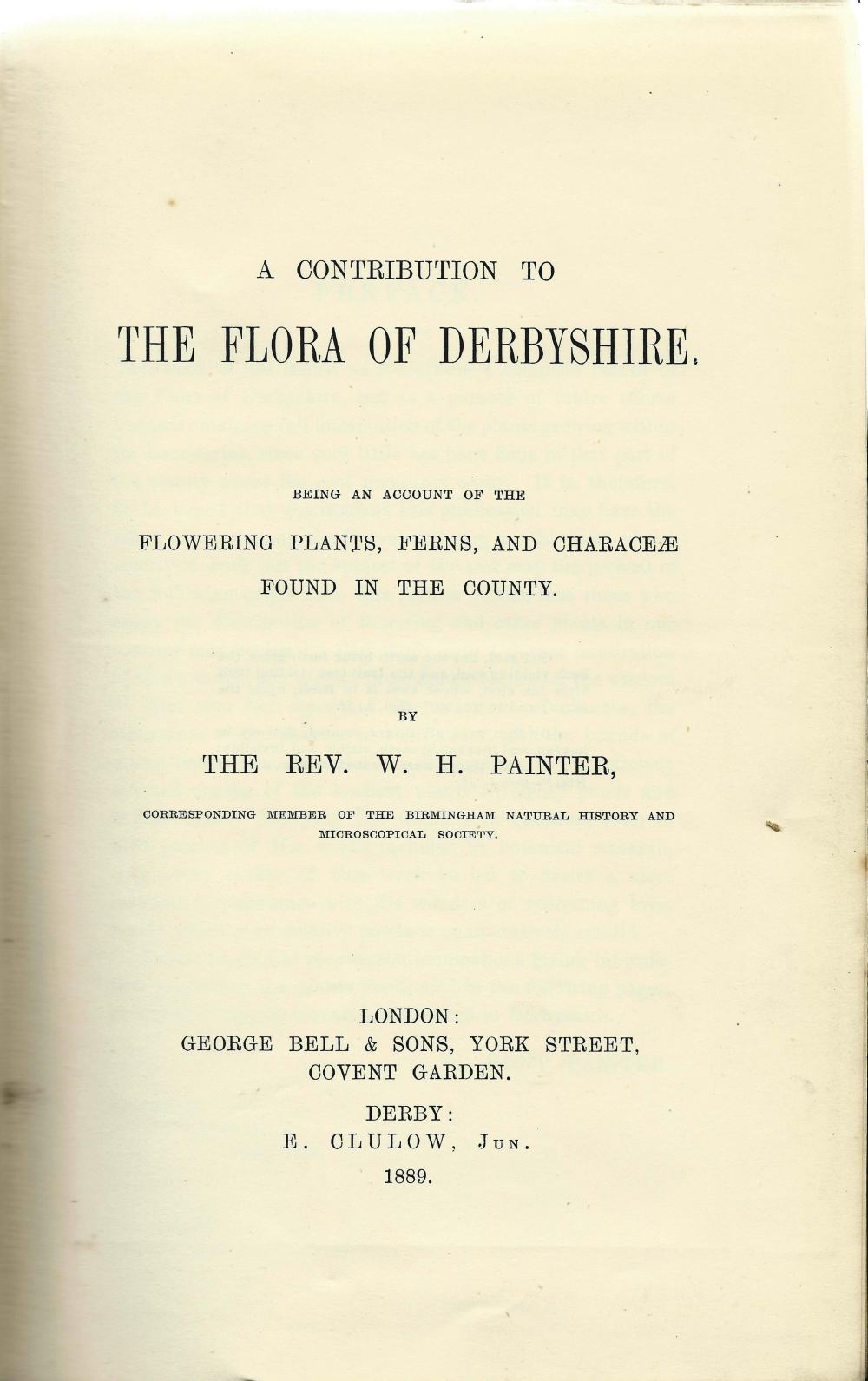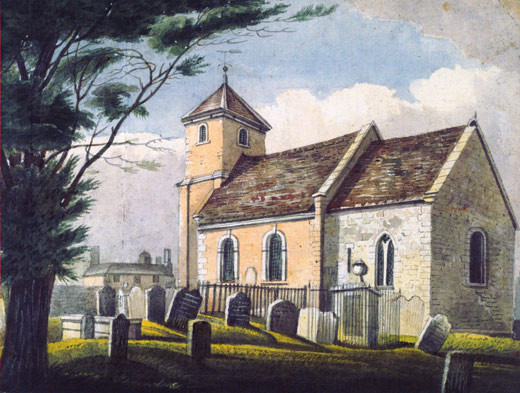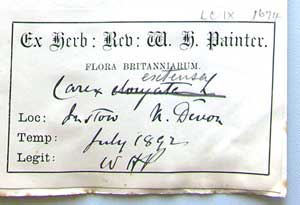William Hunt Painter on:
[Wikipedia]
[Google]
[Amazon]


 William Hunt Painter (16 July 1835 – 12 October 1910) was an English
William Hunt Painter (16 July 1835 – 12 October 1910) was an English
A Contribution to the Flora of Derbyshire, being an account of the flowering plants, ferns, and characeae found in the county
', London: Bell, 1889 which was reviewed by the bryologist


 William Hunt Painter (16 July 1835 – 12 October 1910) was an English
William Hunt Painter (16 July 1835 – 12 October 1910) was an English botanist
Botany, also called , plant biology or phytology, is the science of plant life and a branch of biology. A botanist, plant scientist or phytologist is a scientist who specialises in this field. The term "botany" comes from the Ancient Greek wo ...
who made a significant contribution to the science of Derbyshire
Derbyshire ( ) is a ceremonial county in the East Midlands, England. It includes much of the Peak District National Park, the southern end of the Pennine range of hills and part of the National Forest. It borders Greater Manchester to the nor ...
vascular plant flora. He was a keen and wide-ranging collector of plant specimens, and was a member of the Botanical Exchange Club. In 1889 he published the first in a series of four books, all by different authors and spanning 120 years, all called ''The Flora of Derbyshire
Flora (: floras or florae) is all the plant life present in a particular region or time, generally the naturally occurring (indigenous) native plants. The corresponding term for animals is ''fauna'', and for fungi, it is ''funga''. Sometimes ba ...
''.
Life
William Hunt Painter was born inAston
Aston is an area of inner Birmingham, England. Located immediately to the north-east of Central Birmingham, Aston constitutes a ward within the metropolitan authority. It is approximately 1.5 miles from Birmingham City Centre.
History
Aston wa ...
, near Birmingham, on 16 July 1835. He was the eldest of five born to William, a haberdasher, and his wife Sarah, born Hawkes. His early career was in banking before he decided to join the Church of England. In 1861 he was staying in Chelsea, where he was a lay preaching assistant. Painter attended the Church Missionary Society College, Islington
The Church Missionary Society Training College in Islington, north London was founded in 1820 to prepare Anglican missionaries of the Church Missionary Society for work overseas. Prior to the establishment of the College the CMS missionaries re ...
, where he would expect to be sent abroad by the Church Mission Society
The Church Mission Society (CMS), formerly known as the Church Missionary Society, is a British mission society working with the Christians around the world. Founded in 1799, CMS has attracted over nine thousand men and women to serve as mission ...
, but he ended up as a curate in Barbon
Barbon is a village and civil parish in the South Lakeland district of Cumbria, England. According to the 2001 census it had a population of 263, reducing to 236 at the 2011 Census. The church is dedicated to St Bartholomew. The village is abou ...
in Westmoreland. It was here that he met (Rev) Robert Wood, who introduced him to botany.
In 1865, Painter became curate at High Wycombe
High Wycombe, often referred to as Wycombe ( ), is a market town in Buckinghamshire, England. Lying in the valley of the River Wye surrounded by the Chiltern Hills, it is west-northwest of Charing Cross in London, south-southeast of Ayl ...
, where he met James Britten
James Britten (3 May 1846 – 8 October 1924) was an English botanist.
Biography
Born in Chelsea, London, he moved to High Wycombe in 1865 to begin a medical career. However he became increasingly interested in botany, and began writing paper ...
, who had already published his first paper and was working in the herbarium for Kew Gardens
Kew Gardens is a botanical garden, botanic garden in southwest London that houses the "largest and most diverse botany, botanical and mycology, mycological collections in the world". Founded in 1840, from the exotic garden at Kew Park, its li ...
. Despite Britten's emerging Catholic beliefs, the two would walk and talk together whilst indulging their interest in botany. Painter married Jane Stamps in 1871. In 1881 he and his wife were living in Bedminster, Somerset, where he was a curate.
Painter did much useful work on the flora of Derbyshire, publishing a lengthy paper in 1881, with supplementary notes in 1889. Together these formed the basis of ''Contributions to the Flora of Derbyshire'',William Hunt Painter, A Contribution to the Flora of Derbyshire, being an account of the flowering plants, ferns, and characeae found in the county
', London: Bell, 1889 which was reviewed by the bryologist
James Eustace Bagnall
James Eustace Bagnall ALS (7 November 1830 – 3 September 1918) was an English naturalist with a particular interest in botany, especially bryology. He was the author of the first Flora of Warwickshire ( VC38) in 1891. A noted bryologist, h ...
. Painter published a supplement to his work in ''The Naturalist'', which indicated that he wanted to improve it. Bagnall was an acknowledged expert on mosses and was to publish a similar work to Painter's on the ''Flora of Warwickshire''.
In 1891, Painter was a curate at Biddulph
Biddulph is a town in Staffordshire, England, north of Stoke-on-Trent and south-east of Congleton, Cheshire.
Origin of the name
Biddulph's name may come from Anglo-Saxon/Old English ''bī dylfe'' = "beside the pit or quarry". It may also ...
in Staffordshire. Then in 1894, he was appointed Rector of Stirchley in Shropshire. The rectory was modernised for his arrival, but his stay there was remembered for the maintenance he undertook on the church and buildings.
Whilst staying in Falmouth in the spring of 1898, Painter took up the study of mosses. From that time on they became the focus of his botanical interests. By travelling and swapping specimens he was able to write papers on the mosses of Derbyshire, Brecon, Falmouth and Cardiganshire. Painter remained in Stirchley until 1909, when his botanical and geological specimens were presented to University College, Aberystwyth
Aberystwyth University ( cy, Prifysgol Aberystwyth) is a Public university, public Research university, research university in Aberystwyth, Wales. Aberystwyth was a founding member institution of the former federal University of Wales. The universi ...
before he retired to Shrewsbury. Painter died the following year and was buried in his church in Stirchley. On his death, the ''English Churchman'' said " e Church of England has lost a faithful and devoted minister who was ever jealous for the maintenance of its Protestant principles".
William Hunt Painter donated his herbarium to the University College, Aberystwyth
Aberystwyth University ( cy, Prifysgol Aberystwyth) is a Public university, public Research university, research university in Aberystwyth, Wales. Aberystwyth was a founding member institution of the former federal University of Wales. The universi ...
, but there are also significant specimen plants at Kew and Oxford, in the Department of Botany at Aberdeen, the Natural History Museum in London, the University of Birmingham
, mottoeng = Through efforts to heights
, established = 1825 – Birmingham School of Medicine and Surgery1836 – Birmingham Royal School of Medicine and Surgery1843 – Queen's College1875 – Mason Science College1898 – Mason Univers ...
, the National Botanic Garden at Dublin, the Derby Museum and Art Gallery
Derby Museum and Art Gallery is a museum and art gallery in Derby, England. It was established in 1879, along with Derby Central Library, in a new building designed by Richard Knill Freeman and given to Derby by Michael Thomas Bass. The collect ...
, the University of Glasgow
, image = UofG Coat of Arms.png
, image_size = 150px
, caption = Coat of arms
Flag
, latin_name = Universitas Glasguensis
, motto = la, Via, Veritas, Vita
, ...
, the Hancock Museum at Newcastle upon Tyne, Kew, Manchester Museum, Cardiff and Oxford.
''Fumaria painteri''
Painter was a keen collector and a member of the Botanical Exchange Club. There are few plants that are only found in Britain. One of the plants on this list is possibly '' Fumaria painteri'' or Painter's Fumitory. This flower has only been found twice, in 1905 and 1907, and in both cases it was found by Painter. Plants of this description are not rare, as they occur naturally as hybrids, but the question is whether the discovered versions are fertile or merely another sterile hybrid. A search in 2006 determined that a new specimen had been found in 2005 but the experts failed to agree on the identification.See also
* A. R. Clapham *William Richardson Linton
Rev. William Richardson Linton (2 April 1850 in Diddington, Huntingdonshire – 7 April 1908 in Ashbourne, Derbyshire), Corpus Christi College, M.A., was an English botanist and vicar of the parish of Shirley, Derbyshire. He was regarded as o ...
References
{{DEFAULTSORT:Painter, William Hunt 1835 births 1910 deaths People from Birmingham, West Midlands English botanists 19th-century British botanists 19th-century English Anglican priests Alumni of the Church Missionary Society College, Islington